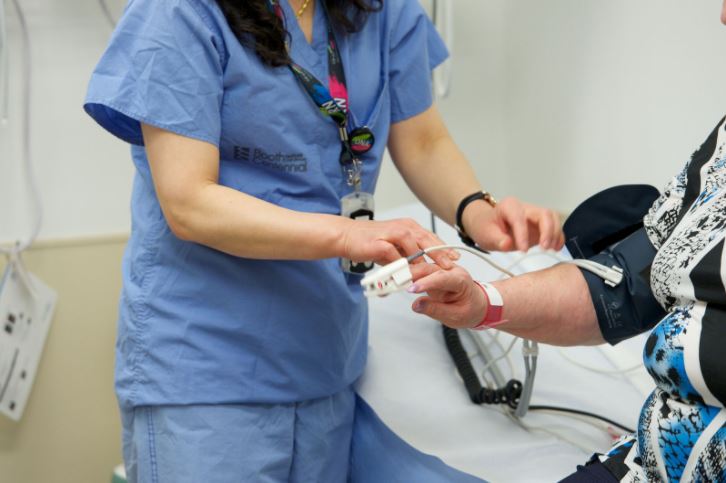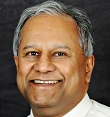There is an old joke that the best place in Toronto to get a heart attack is in the back of a city taxi because chances are the driver is an out-of-work immigrant doctor.
Anecdotal reports give the joke some credence, and it inspired the title of a 2012 Citizenship and Immigration Canada study, “Who Drives a Taxi in Canada?” The study revealed that a significant number of immigrant taxi drivers hold a post-secondary degree.
This joke and the study are the inspiration for Dr. Cabbie, a romantic comedy set in downtown Toronto. It tells the story of Deepak, a doctor from India and recent immigrant who hopes to find a job in medicine. Unable to land a job as a doctor, Deepak takes to driving a cab and also converts his car into a mobile clinic to serve the needy.
Immigrants play a big role in fight against COVID-19
While the movie is a tall story, the pandemic has thrown the spotlight on how foreign-born or trained personnel are playing an increasingly important role in health care, be it Hong Kong–born Dr. Theresa Tam, Canada’s chief public health officer, or the doctors, nurses, personal support workers (PSWs) and other medical staff on the frontlines of fighting COVID-19.
One example is Adriana Enriquez-Rosas, a Mexican-Canadian who put aside her cognitive work as a neuropsychologist to help contain the COVID-19 outbreak at Institut universitaire de geriatrie de Montreal (IUGM), one of the hardest-hit senior care centres in Quebec.
Another is Birgit Umaigba, a Nigerian-Canadian critical-care nurse in the Greater Toronto Area, who worries that the protocol around personal protective equipment (PPE) slows her response to patients in life-and-death situations.
Ricky Cheng, a cardiology nurse with the Scarborough Health Network, is worried about the impact of the pandemic on the patients with other medical conditions who are avoiding hospitals because they’re afraid of contracting the virus.
Strict hospital infection control policies and their impact on patient care are also a concern for Leni Biju, a cardiology nurse in Oshawa, Ont.
“How can you leave when someone is lonely and distressed?” asks Biju, who was a nurse in India and Dubai before coming to Canada.
Entire health-care system relies on immigrants
According to data from the Statistics Canada 2016 Census, immigrants account for one out of every four health-care workers. They make up 36 per cent of all pharmacists and family physicians across Canada; 39 per cent of all dentists; 54 per cent of dental technologists and related occupations; 27 per cent of all licensed practical nurses; and 35 per cent of nurse aides and related occupations.
Also, more than 40 per cent of all newcomers to Canada between 2011 and 2016 who were working in the health-care sector were employed in the important areas of nursing and residential care, and in home health care as PSWs.
“Without personal support workers, the health-care system in Canada would be broken,” says Hermisenda Reina. She started working as a PSW 30 years ago in Quebec. After she moved with her family to Ontario, she attended Sheridan College to follow the same career. “I know what I’m talking about, I’ve been here for a long time,” she says.
All of these individuals have a story to tell. While their stories may not be as dramatic as that of the fictional Deepak, their dedication to what they do tells us that Canada will need to depend more and more on immigrants when it comes to health care.
According to government statistics, more than 1.6 million people work in Canada’s health-care sector, and many more will be needed in the coming years to look after an increasingly aging population. Almost 500,000 workers in the sector are over the age of 55, and most of them will be retiring in the next decade or so.
In addition, as the pandemic has shown, recruiting nurses and other health-care staff is a daunting task during emergencies. While there is a clear opportunity here for immigrants to plug the gap, reality is a different story.
To begin with, doctors and nurses who immigrate to Canada face a burdensome and challenging process to become accredited. This includes passing a language proficiency test, which they would have already taken to immigrate to Canada. It takes some doctors up to 10 years to complete the requirements, along with a substantial financial burden.
“Brain waste”
In Ontario alone, there are 13,000 foreign-educated doctors and 6,000 foreign-educated nurses who aren’t working in their fields, according to government agency HealthForceOntario. These figures were quoted by Ontario Liberal Leader Steven Del Duca in a recent letter to Premier Doug Ford, urging him to harness these skilled professionals to fight the pandemic.
To provide backup, medical regulators across the country did take steps to relicense those who were not currently in the system. However, these calls for all hands on deck were not specific to foreign-educated professionals. Rather, they targeted retired physicians.
Regulators in Alberta and British Columbia called for doctors who had retired in the past two years to return to practice. Those in Saskatchewan were ready to relicense doctors going back three years.
Similarly, Ontario announced the issuance of Supervised Short Duration Certificate licences by the College of Physicians and Surgeons of Ontario (CPSO) under the existing Medicine Act, 1991.The initial response to the Ontario scheme was tepid, with the CPSO receiving only 12 applications and approving 10 of them. The college couldn’t say whether any foreign-trained doctors were among the 10 physicians who were issued licences.
The reason for the poor response is all too familiar. To begin with, there was a substantial fee to register for work that was to be considered voluntary. On top of that, one not only had to go through a number of steps to obtain a 30-day licence but also apply again to extend it for another 30 days.
Coordinated response is needed
The number of doctors available to tackle the COVID-19 pandemic could be increased if the government or regulatory bodies would cut red tape to get foreign-educated doctors accredited more quickly, according to Robert Falconer, a research associate at the University of Calgary’s School of Public Policy.
In a recent episode of The Macdonald-Laurier Institute’s Pod Bless Canada podcast, Falconer said a timelier and more accessible accreditation system could rapidly increase the number of emergency health-care professionals.
“When you look at the number of immigrant physicians who move to Canada every year, that’s about 1,000 immigrant positions per year on top of the 3,000 or so that we graduate from our schools—so we’d be almost graduating another third of our medical school graduates in total.”
While Canada has made efforts to improve regulatory aspects of international transitions for health professionals who choose to migrate, concerns about the disequilibrium between supply and demand, credential recognition and health professional “brain waste” remain.
This is according to Alexia Olaizola and Arthur Sweetman of the Department of Economics at McMaster University, cited in a chapter of an Organisation for Economic Co-operation and Development (OECD) report.
Sweetman, who holds the position of Ontario Research Chair in Health Human Resources, posits that there are structural problems in the Canadian context resulting from the misalignment of provincial responsibility for health-care delivery with federal immigrant selection. To alleviate these negative outcomes, he proposes a policy change to increase the role of provincial governments in the selection of potential immigrants with health-care credentials.
These measures are urgent because with 2.8 doctors for every 1,000 people as of 2018, Canada ranks 30th in the list of OECD countries. Austria tops the list, with 5.2 doctors per 1,000 people.
Reforms aimed at accrediting immigrant health-care professionals more easily are also important if Canada wants to welcome another Dr. Lap-Chee Tsui or Prof. Lakshmi P. Kotra.
Dr. Tsui emigrated from China and went on to discover the gene responsible for cystic fibrosis along with a team of scientists from the Hospital for Sick Children (SickKids) in Toronto. Prof. Kotra emigrated from India and went on to discover a new anti-malaria agent through his research at the University Health Network in Toronto.
Both immigrants are a fitting testament to the importance of an integrated and diverse workforce for the sustainability and effectiveness of the Canadian health-care system. Jokes aside, Canada needs real-life Dr. Cabbies to be working in health care, not picking up fares.
Photo by Shan Qiao.
This story is a part of the “Immigrants on the Frontlines of Fighting COVID-19” series made in partnership with The Canadian Press.
Ranjit is a Toronto-based writer with interest in Canadian civic affairs, immigration, the environment and motoring. Maytree and Al Jazzera English alumnus.






I am Ephraim Israel.tanzanian mam looking for medical laboratory employment in canada.howand what do I suppose to do so that my dreams to be fulfilled.